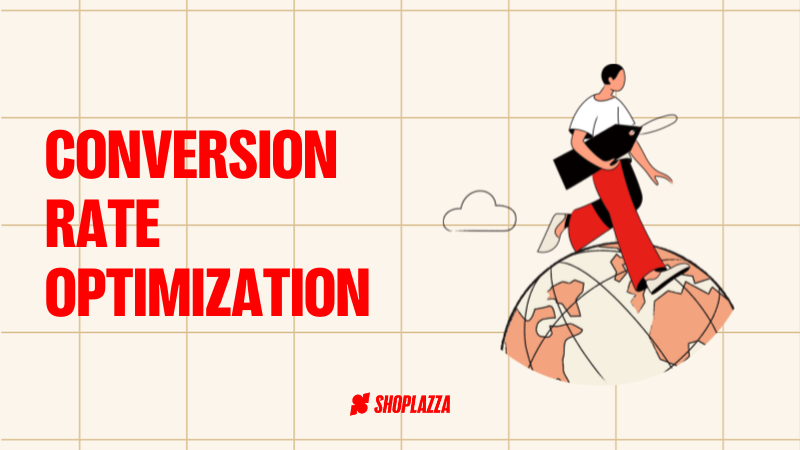
Ecommerce business owners are always looking for new ways to increase conversions and get more sales. If you're struggling to boost your online sales, you may want to try using heatmaps. Heatmaps are a valuable tool that can help you understand what's working (and what's not) on your website. In this blog post, we'll share seven proven heatmap tactics that you can use to increase ecommerce conversions. With these tips, you'll be able to take your online store to the next level.
First, what are website heatmaps?
A website heatmap provides a visual representation of average visitor behavior on a web page. There are three common heatmap types that show different types of behavior.
Scroll heatmaps show how far down the page visitors are scrolling. This is vital to see which page elements are getting missed by the average visitor.
A click heatmap shows where clicks happen on the page. This will help you understand which elements are driving the most engagement and which are getting overlooked. A more intense color on an element indicates more clicks.
Lastly, a moves heatmap shows where on the page visitors are spending the most time with their mouse. Just click a click heatmap, a more intense color indicates more attention on the part of the page.
Use heatmaps to see where people are clicking
Heatmaps are dynamic tools used to visualize average user behavior and actions. With a heatmap, you can easily see where people are clicking on your website with just one glance. And with a dynamic heatmap tool, you can see clicks and engagement with dynamic elements like dropdown menus, popups and forms.
By using dynamic click maps for your ecommerce websites, you’ll be able to maximize the potential of your layout and user experience, ensuring website visitors can quickly find what they need—and ultimately increase revenue.
Use heatmaps to find out what's confusing your users
If you're an ecommerce business looking to increase conversions, heatmaps are the perfect tool for finding out what's confusing your customers during their journey.
Heatmaps provide valuable customer insights by showing areas of interest or confusion on a website. This can help you identify where friction points lie in customer journeys and discover solutions that optimize user interactions and boost conversions. By utilizing heatmaps, you can make meaningful changes to your website that have real benefits to customer experience and ultimately lead to more sales.
Look for people clicking elements that aren't linked, clicking pages that provide deeper details or scrolling up and down pages repeatedly in a session recording.
Use heatmaps to see how far people scroll down your pages
Heatmaps are an ingenious way to get a more granular look at your website’s average visitor behavior. By using scroll maps, you can easily gain insight into how far people scroll down your page and where they hit the effective fold.
.jpg?width=600&height=338&name=Scrollheatmap-CTA-newlogo%20(4).jpg)
With scroll maps, it's now easier than ever to measure the effectiveness of where you place key elements like your CTA button, as well as other elements on your pages. Understanding user scroll behavior is essential when it comes to increasing ecommerce conversions, and heatmaps are one of the best tools available to do this.
As you go down the page in a scroll heatmap, you'll see the percentage of visitors who made it that far. And once you reach 50%, you'll pass what's called the effective fold. This measures where you can expect an average visitor to stop scrolling.
Use heatmaps to improve your call-to-action buttons
Heatmaps are a powerful and valuable tool for website owners who really want to get the most out of their CTA buttons.
They give you an insight into how people interact with your website, but more importantly—which buttons on your page are not seen by the average visitors. Analyzing heatmap results allows you to strategize CTA placements more effectively, which can subsequently increase your conversion rate overall.
If your primary CTA is below the average scroll depth (the effective fold), then most visitors aren't even getting a chance to convert.
Use heatmaps to find out what's distracting your users
By tracking user behavior, you can see exactly where visitors are getting distracted so you can make the necessary tweaks. Are people clicking an element directly above or below your desired action? Do visitors scroll right past your form to look at images or watch a video?
Click maps will show you a ranked list of the most-engaged elements, helping you see if anything is taking away attention from your most important items.
Use heatmaps to improve your form design
Heatmaps simplify form analytics by providing easy-to-understand visual information about form interaction and how it affects conversion rates. Heatmaps offer valuable insights into form location, form fill-out rate, user scroll depth and any form difficulties users are facing, such as abandonment.
.png?width=600&height=315&name=WordPress-formanalytics-1024x528%20(2).png)
By using heatmaps to better understand form interactions and optimize form design, you can give potential customers an optimal buying experience that maximizes conversions. With the data from heatmaps, you can uncover hidden trends in your form design and redesign accordingly for maximum success.
Dive deeper with session recordings to see specific visitor behavior
When it comes to increasing ecommerce conversions, heatmaps provide helpful insight as to where people are focusing their attention on a site. To take things a step further, you can dive deeper with session recordings which allow you to watch a full playback of every action taken by each individual visitor.
The Two-Step Heatmap Analysis to Increase Website Revenue:
This can give you an even clearer picture of how visitors interact with your website, allowing you to make more informed decisions about optimizing your ecommerce store and making sure that visitors stick around until the checkout page. In short, session recordings can show you exactly what is happening when it comes to visitor behavior—giving you all the information you need to maximize conversions.
Conclusion
In conclusion, using heatmaps can make a huge difference when it comes to optimizing conversions. By taking advantage of the insight that heatmaps provide, you can discover user behavior patterns, test and optimize elements on your websites, and make well-informed decisions to boost conversions.
Heatmaps can help you spot layout issues, optimize clickable areas, improve scroll performance and better understand how users are interacting with your site.
But don’t forget: Heatmaps can only tell you so much. To get the most value out of them, use them in combination with session recordings; this will enable you to dive deeper into visitor behavior—such as identifying customer journey glitches or understanding why people leave your website abruptly—so you can find out what visitors truly want.
Visit Lucky Orange's website.



